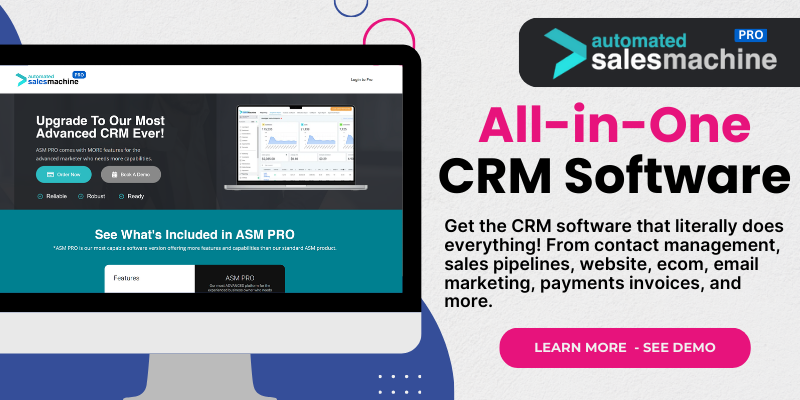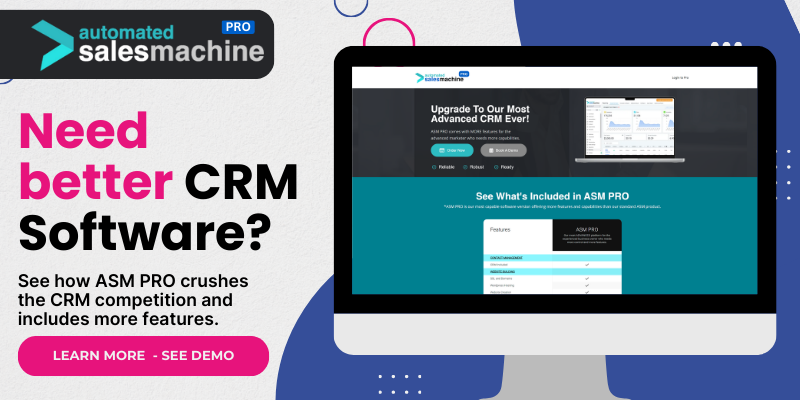Define Your Business Needs
Consider Your Industry
Before diving into the world of CRM options, I always recommend taking a step back and assessing what your business truly needs. Each industry has different requirements. For instance, a real estate firm will need robust property management tools, whereas a tech startup might prioritize customer support features.
I personally find it helpful to list out must-have features versus nice-to-haves. This way, when I start looking at potential CRM systems, I can quickly eliminate those that just won’t cut it for my specific needs.
Moreover, don’t just think about the current needs. Consider where your business is headed in the next few years. A CRM that might seem perfect now could become obsolete as your needs evolve.
Identify Key Features
Once you understand your industry requirements, the next step is narrowing down the features you need for your specific business operations. I always ensure to include aspects like lead management, reporting tools, integration capabilities, and mobile accessibility on my checklist.
Take some time to really think about your sales process. For example, if you rely heavily on social media, you may want a CRM that integrates seamlessly with those platforms. I made this mistake once – focusing on a CRM with great analytics but without social media integration, which cost me valuable time and leads.
Remember, each feature should serve a purpose. If it doesn’t bring value to your team, it simply adds complexity that you don’t need.
Involve Your Team
A CRM is not just for the sales department; it impacts the entire organization. That’s why I always include my team in the evaluation process. Each member can offer unique insights that may have flown under my radar.
I recommend setting up a meeting or a few brainstorming sessions where everyone can voice their thoughts. Focus groups create an atmosphere of collaboration, ensuring that the selected software meets everyone’s needs. This step can also ease the transition process later on.
Involving your team helps cultivate a sense of ownership, making them more likely to embrace the new system once it’s in place. They can provide feedback on workflows and what tools they feel would facilitate their processes the best.
Research Available CRM Software
Start with Reviews
When I first started looking into CRM systems, I was overwhelmed by the number of options out there. The best starting point I found was online reviews. Websites like G2 and Capterra are goldmines for unbiased opinions. They offer firsthand experience from other users, which can provide insight into how a CRM performs in real-world scenarios.
I pay close attention to common themes in the reviews – if a lot of users mention difficulty with customer support, that’s a red flag. I make a point to look at both positive and negative reviews to get a balanced view of what I might experience.
Additionally, don’t shy away from reaching out to peers in your network who may have experience with a CRM you’re considering. Sometimes a direct chat can yield the best insights.
Compare Functionality
Now, it’s time to put your research to the test. I usually create a comparison chart that lays out the features and functionalities of each CRM side by side. This visual tool helps me see at a glance where each option shines and where they might fall short.
Look into aspects like customization capabilities, scalability, and ease of use. I usually prefer software that allows me to tailor features to fit my specific workflows, rather than those that come with rigid, one-size-fits-all setups.
Remember, functionality can often be tied to how user-friendly the system is. If my team isn’t able to navigate the CRM efficiently, it’s essentially useless regardless of how packed it is with features.
Take Advantage of Free Trials
One of my best tips for evaluating CRMs is to take advantage of free trials. Most reputable CRM vendors offer trial periods. I make it a point to fully explore the capabilities of each system during this time.
While testing, I focus on user experience, the learning curve for team members, and support resources available. I encourage my team to participate in the trial as well, gathering their feedback to see how well they adapt to the software.
Don’t forget to utilize customer support during the trial; this helps gauge how responsive and helpful they might be down the line. It’s comforting to know that if issues arise, you have a support team ready to assist.
Evaluate Costs and Budget
Understand Pricing Structures
Pricing can be tricky, and I’ve learned the hard way that the lowest price doesn’t always equate to the best deal. I always carefully look at the pricing structures—some CRMs charge per user, while others have a flat rate.
It’s vital to calculate your estimated costs realistically based on your team size and potential growth. More often than not, I’ve found that what looks like the cheapest option upfront can quickly balloon with hidden fees or additional costs for essential features.
So always consider trialling a few months of more extensive features if the software offers it, rather than committing to an annual subscription all at once.
Factor in Long-Term Costs
I always think long-term when evaluating the cost of CRM systems. Consider potential growth and whether the CRM can scale with your business. If you plan on expanding your team or functionality in the near future, ensure the pricing structure supports that growth without excessive costs.
Look for upgrade paths or additional functionalities that you can add down the line without substantial re-training or complications. A CRM that grows with you saves headaches later on.
Also, don’t forget to evaluate the costs of implementation, training, and ongoing support. Sometimes these can dwarf the software’s base price, especially if you have to hire a third party for a seamless transition.
Explore Potential Return on Investment
As a marketer and business owner, I’m always on the lookout for how investments improve my bottom line. When considering a CRM, I assess how it can enhance sales efficiency and customer relationship management.
Create a set of metrics to measure potential ROI. For instance, will the CRM provide better lead tracking that could help convert more leads to customers? The right CRM should ultimately drive revenue growth and improve profitability.
From my experience, projecting potential ROI can guide you toward a CRM that is worth the investment—not only in the immediate future but also as your business evolves.
Consider Future Support and Upgrades
Evaluate Customer Support Options
When I look at CRM software options, customer support is crucial. I always check whether they offer 24/7 support, a knowledge base, or community forums. Sometimes during off-hours, issues pop up, and having access to help can be a lifesaver.
Beyond availability, I check the quality of the support by looking online for user experiences. A company that truly listens to and addresses concerns can make all the difference. I’ve experienced CRMs where support was slow and unhelpful, causing unnecessary stress during crucial moments.
I also pay attention to how proactive the support team is in issuing updates and improvements based on user feedback. It’s a positive sign when you see vendors actively engaging with their user base.
Check for Regular Updates
In a tech-driven world, I cannot stress enough the importance of regular updates. Software evolves rapidly, and a CRM must keep pace with these changes to remain relevant. Check out how often the software is updated—monthly or quarterly updates are a great sign.
I always look for vendors that publicize their upgrade schedules and communicate upcoming changes. This transparency guarantees that the CRM will adapt to market changes and maintain its usefulness over time.
Plus, you’ll often find that these updates come with new features and improvements based on user feedback, which is super valuable for enhancing productivity within your team.
Assess Scalability
Finally, a vital aspect to consider is scalability. I’ve seen too many businesses outgrow their CRM too quickly. As you grow, your CRM should evolve with you; whether that means accommodating more users or adding more complex functionalities.
When evaluating, check for the ease of adding new users, functionalities, or integrations. I always think about future needs and whether the CRM supports them without requiring a complete overhaul.
If it doesn’t scale, you’ll face a lot of unnecessary hassle down the road. So ask yourself: will you still be able to use this tool effectively as my business grows? If the answer is no, it’s time to move on.
Frequently Asked Questions
What are the main factors to consider when choosing a CRM?
The main factors include your specific business needs, key features required, budget constraints, integration capabilities, and the level of customer support offered.
How do I involve my team in the CRM selection process?
Set meetings to discuss the needs and challenges the team faces, and gather their input and feedback on potential CRM options. A collaborative approach promotes buy-in and can ease the adoption phase.
Is it worth trying a CRM before committing?
Absolutely! Free trials allow you to explore functionalities and user experience, helping you ensure the software meets your requirements before making a financial commitment.
How can I evaluate which CRM will provide the best ROI?
Assess how the CRM can streamline your processes and enhance customer management. Create metrics to measure potential revenue growth and operational efficiencies that the CRM could facilitate.
What should I do if the CRM doesn’t meet my expectations after implementation?
If the CRM isn’t working as expected, first reach out to customer support for guidance. If issues persist, evaluate your contract for exit options or consider migrating to a different CRM that better suits your needs.

